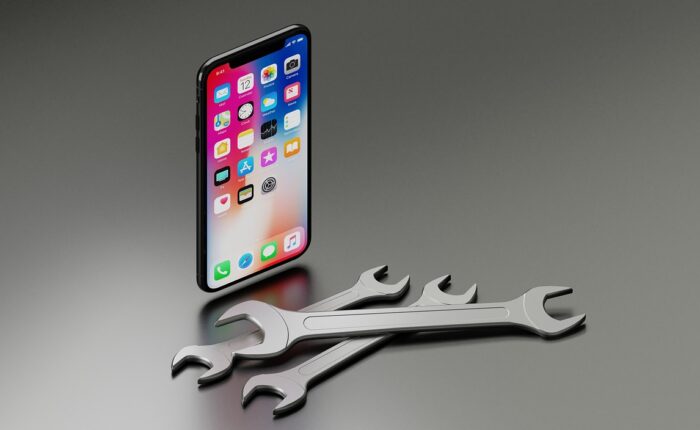Let’s Choose Repair Instead of Replace

Technology products are thrown away and replaced often instead of repaired because manufacturers want to maximize their profits. They make it hard to repair by forcing consumers to go to vendor-specific repair shops that charge a significant sum of money (close to the cost of a new device) and also withhold crucial parts and manuals which can help repair a product.
For example, a broken TV might require just a 50 dollar part to fix but a repair shop will not always know which part to order or where to install it due to the lack of manufacturer schematic diagrams illustrating how to fix the TV. Without market competition for repairing products, consumers do not have competitive options for repairing products and repair costs are high. As a result, the consumer is usually forced to buy a new technology product. This has a significant environmental cost in addition to a significant cost for consumers.
Example – Repairing a Smartphone
Let’s present some facts concerning smartphones which have been noted to have a carbon footprint exceeding that of other devices such as desktop computers, laptops, and displays.
Consider that 85 to 95 percent of carbon emissions for a smartphone comes from production and not phone usage. Repairing a phone and thus extending its lifetime can reduce carbon emissions released as fewer phones need to be made. According to the Restart Project (a group devoted to repairing electronic devices such as toasters, smartphones, and headsets) website – using every phone sold in 2018 for one-third longer than usual would prevent carbon emissions equal to Ireland’s total annual emissions. Also, the total carbon footprint in the yearly manufacturing “of mobiles is at least equal to the Philippines’ annual carbon emissions, a country of over 100 million people”.
Repair instead of replace also means that less rare earth substances (required for making phones) need to be mined – rare earth mining creates a significant amount of toxins with health risks for people and habitat destruction nearby mine sites. Repairing also means less highly polluting electronic waste – Smartphone electronic waste was estimated to weigh more than 50 million tonnes in 2019.
How Repairing Helps the Economy
Repairing devices also creates lots of jobs. According to iFixIt (an organization that promotes repair over replace), for every 900 tonnes of electronics, landfilling creates zero jobs, recycling creates 15 jobs, and repairing creates 200 jobs. In addition, these are usually jobs local to the consumer resulting in economic growth in local communities. According to an article in the Canadian journal Policy Options, “Access to replacement parts and the ability to perform repairs when required in the automotive industry is the foundation for tens of thousands of jobs across Canada, and there is little reason to think that electronics and equipment with embedded computer systems would be any different.”
Legislation – Next Steps – The Right To Repair
A poll of Canadians conducted in 2019 found that 75 percent strongly support right-to-repair policy reforms that would make things easier to maintain, fix and upgrade.
To fight for the right to repair some state and provincial jurisdictions in the US and Canada have considered legislation that makes it easier to repair technology products. These rules would require that consumers and repair shops have easy access to replacement parts, software, documents, and tools for repairing products.
One example of this is the Right to Repair bill introduced by MPP Michael Coteau in the Ontario, Canada legislature. Although rejected in May of 2019 the legislation can be seen as a stepping stone towards next generation Right to Repair laws in Canada. The bill would force manufacturers to provide easy access to replacement parts, software, tools, and documents to make it easy to repair electronic devices. The legislation was rejected due to the influence of technology manufacturers.
The government of Canada in its 2023 Budget announced that it will implement a right to repair approach for Canadians with public consultations happening in the summer of 2023. They have committed to start by focusing on home appliances and electronics in 2024. Let’s make sure that they keep to their promise.
Right to repair legislation means environmentally friendly products, lower costs for consumers, and a significant number of local repair-oriented jobs. This is a triple win that needs your support. Write to your political representatives to press for a strong right to repair.
